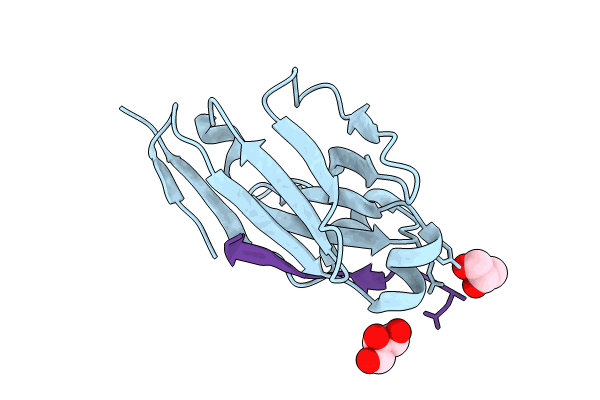
Deposition Date
2023-05-31
Release Date
2024-01-10
Last Version Date
2024-11-20
Entry Detail
PDB ID:
8JJV
Keywords:
Title:
Structure of truncated form of nanobody in complex with alpha-synuclein peptide
Biological Source:
Source Organism:
Camelus dromedarius (Taxon ID: 9838)
Homo sapiens (Taxon ID: 9606)
Homo sapiens (Taxon ID: 9606)
Host Organism:
Method Details:
Experimental Method:
Resolution:
1.23 Å
R-Value Free:
0.16
R-Value Work:
0.14
R-Value Observed:
0.14
Space Group:
P 2 21 21


